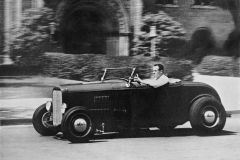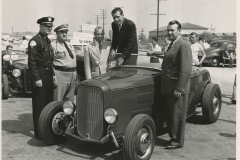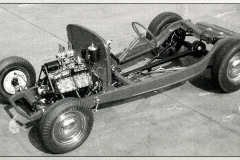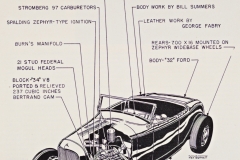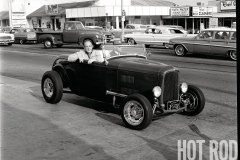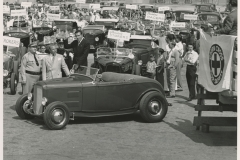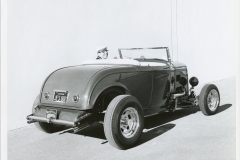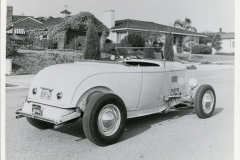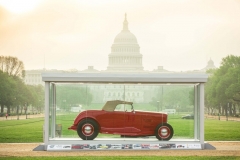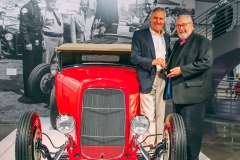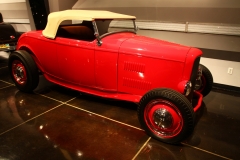Bruce Meyer Donates World’s Most Famous Hot Rod to the Petersen Automotive Museum
Donation of the “McGee Roadster” honors the hot rod’s celebrated history while highlighting the importance of legacy donations.
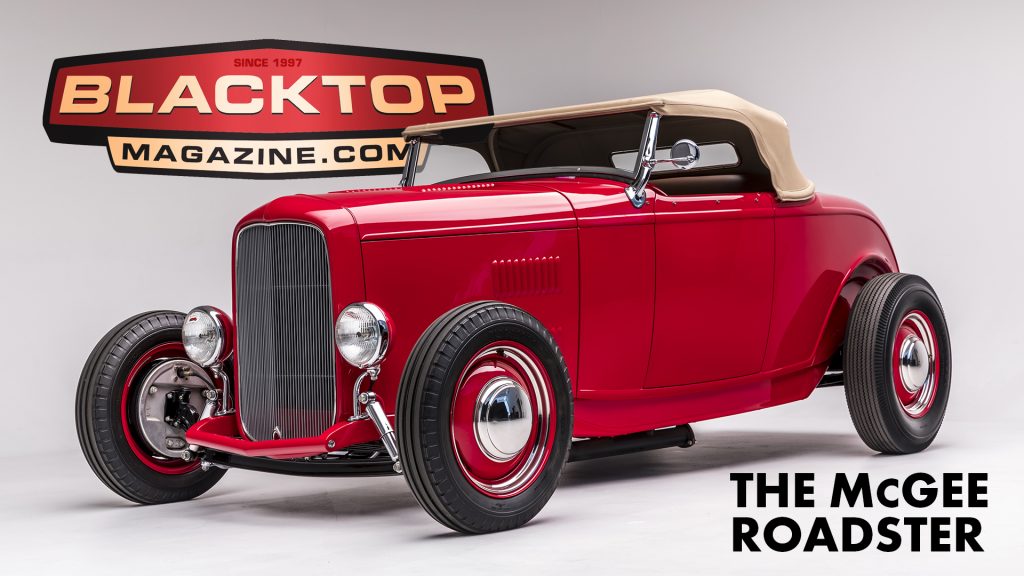
A recent donation to the Petersen Automotive Museum will ensure that generations to come can enjoy one of the quintessential American hot rods.
Renowned car collector Bruce Meyer recently handed over the keys to his 1932 Ford “McGee Roadster” to Terry L. Karges, executive director of the Petersen Automotive Museum. Constructed by noted hot-rod builder Bob McGee, the McGee Roadster introduced an aesthetic that quickly became nearly ubiquitous in the roadster community. The popular hot rod will become part of the Petersen’s permanent collection.
The Petersen Automotive Museum and the McGee Roadster share an origin story that stems from Hot Rod Magazine, founded by Robert E. Petersen in 1948. The McGee Roadster’s popularity skyrocketed after appearing on the cover of Hot Rod Magazine, the first street car to do so. Petersen’s subsequent success in publishing allowed him to launch one of the world’s finest automotive museums in 1994.
“Hot rods are vital to the entire automotive industry, and Robert Petersen is the man who really brought hot rodding to the people. This car is an important piece of automotive history, and there is no more worthy destination than the Petersen Automotive Museum,” said Meyer, who is also founding chairman of the Petersen.
The iconic roadster has raced on the Bonneville salt flats, served as a daily driver and originated many of the design cues synonymous with hot rodding. McGee, who started working on the roadster in 1947, created the signature look with plenty of customization, including lowered suspension, larger Lincoln Zephyr rear wheels, a three-piece louvered hood, peaked and filled grille shell, hidden door hinges and shaved door handles, all painted bright red with a custom interior.
“The McGee Roadster is so much more than just a car. It is the symbol of an entire era and generation of innovative hot rodders,” said Karges. “We are honored by Bruce’s donation and proud to preserve this piece of history.”
In 1956, McGee sold the roadster to Dick Scritchfield, an avid hot rodder and automotive career man. Scritchfield, who had contacts in the film industry, started leasing the car to movie producers and television shows for use in their productions. Repainted by a friend of Scritchfield’s using Candy Apple Red paint and silver metal flake, the roadster also became the first non-experimental metal-flake paint job in the automotive industry. Over the following years, the car underwent many additional modifications before Meyer restored it to its original 1948 configuration in the late 1990s.
The McGee Roadster paved the way for hot rodding’s entrance into mainstream culture. Its appearances in many films and classic television shows, such as “Happy Days,” “Dragnet” and “Fantasy Island,” helped it become an icon for a generation.
It was featured on the U.S. Postal Service’s “Hot Rods Forever” commemorative stamp in 2014; the stamps were designed by Derry Noyes and digitally rendered by graphic artist John Mattos. The car has also been shown and won in its current configuration at the Pebble Beach Concours d’Elegance and the Grand National Roadster Show. On April 12, 2017, the McGee Roadster became the only hot rod added to the National Historic Vehicle Register.
The McGee Roaster is currently on display in the Ross & Beth Myers Gallery at the Petersen Automotive Museum.
Article and Photos: Petersen Automotive Museum

